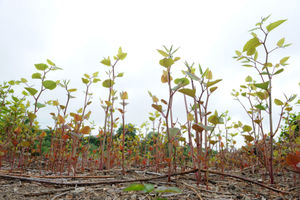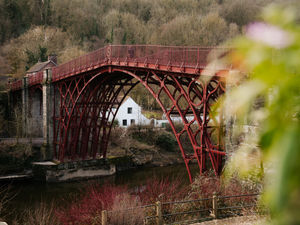Japanese knotweed's Shropshire hotspots revealed
Ironbridge is Shropshire's worst spot for Japanese knotweed infestation, a specialist in the invasive plant said.

Environet UK said that there have been 89 knotweed infestations within a 4km radius of Ironbridge, with 55 in Shropshire's next-worst town, Shrewsbury.
Telford, Bridgnorth and Church Stretton follow, with 32, 23 and 20 respectively.
The company said that four to five per cent of the UK's houses are currently affected by the plant, which is difficult to treat without professional help.
Environet released a statement with advice for homeowners concerned about Japanese knotweed.
"Identify any suspicious plants. Japanese knotweed starts growing rapidly in March and April, when red spears emerge from the ground, turning green before forming hollow canes. If you’re not sure what you’re looking for, email a photo to expert@environetuk.com for free identification. Plants commonly confused for Japanese knotweed include bindweed, Russian vine and ivy.
"In most cases knotweed can be dug up during the lockdown period. As the work is undertaken outside and there’s no need for a treatment professional to enter a property, it’s still possible to excavate knotweed as long as social distancing measures can be safely observed. Contact a professional removal firm and arrange a remote survey using FaceTime or by sending photographs.
"Don’t panic if this is not possible, for example at a terraced property with limited rear access. Homeowners can still make arrangements to have the invasive plant removed when restrictions are lifted and the work will typically only take a couple of days. While it’s always best to treat or remove Japanese knotweed as soon as possible, in most cases it won’t do too much harm to leave it happily growing for the next few weeks.
"Herbicide treatments don’t take place until early June anyway when the plant is in full leaf. Make arrangements now for peace of mind and to ensure you’re at the front of the queue.
'Don't be tempted to tackle it yourself'
"If you’re hoping to sell your home, use this time to deal with the problem and secure a 10-year insurance-backed guarantee for the work, to help your sale progress smoothly once lockdown is over. Sellers are legally obligated to inform buyers if a property is or has been affected by knotweed and could be sued if they fail to do so.
"Don’t be tempted to tackle Japanese knotweed yourself. Methods attempted by homeowners to kill the plant include mowing it, covering it to deny sunlight, setting fire to it, dousing it in bleach or petrol and even electrocuting it!
"But none of these measures are effective at killing the plant’s vast underground root system and you could inadvertently aid its spread. Plus, Japanese knotweed waste can’t be put in a green bin. It’s classed as controlled waste and needs to be disposed of at an authorised landfill site."
Nic Seal, founder and managing director of Environet, said: “Our message to homeowners who discover Japanese knotweed growing in their garden over the next few weeks is not to panic and resist the temptation to deal with it themselves.
“In most cases knotweed can still be removed during the lockdown period, but if this isn’t possible it won’t make a huge amount of difference to leave the plant growing until restrictions are lifted. A failed attempt to dig it up could help it spread and spraying the plant with herbicide makes professional treatment more difficult further down the line. Where we cannot treat or remove knotweed due to current covid-19 restrictions, we pledge to tackle at no further cost any resulting spread on clients’ property.”
Learn about knotweed in your area and report sightings online at environetuk.com/exposed-japanese-knotweed-heat-map





